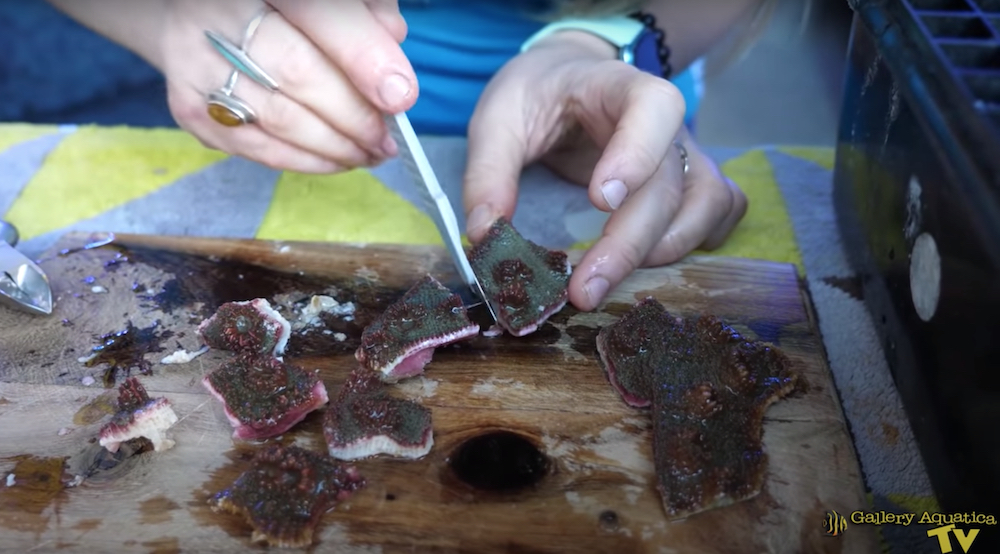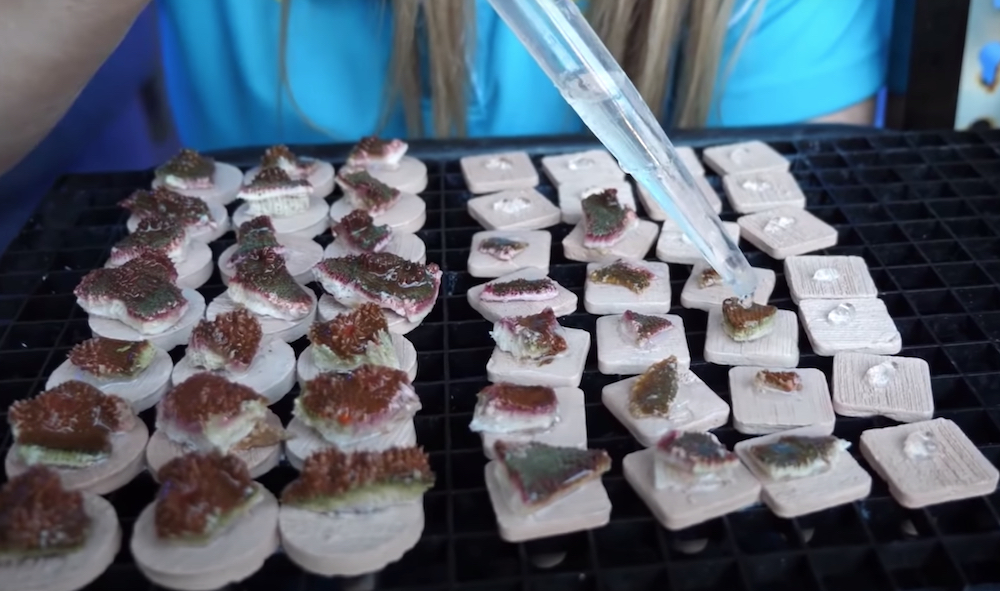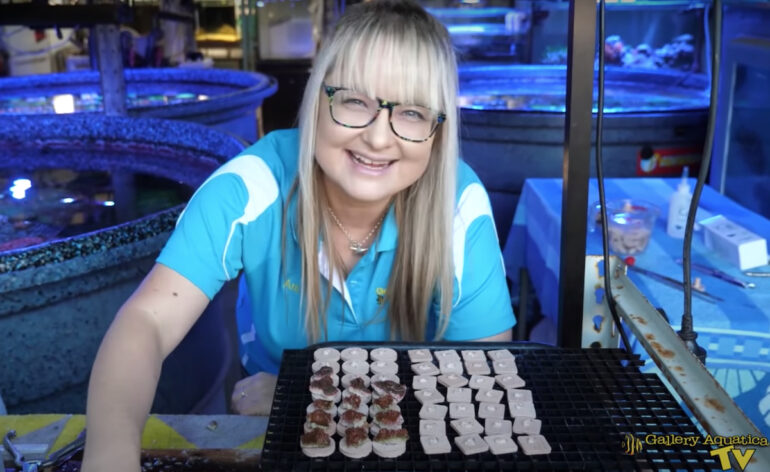Ania is back with another episode of the frag files! This time she is showing us a few quick tips for fragging chalice corals. Check out the video below, or on the Gallery Aquatica YouTube Channel to learn more about coral fragging.
Chalice corals can describe a whole host of species within four separate coral genera, Mycedium, Echinopora, Echinophyllia, and Oxypora. The skeleton of these corals is fairly porous making them easy to frag and relatively fast-growing.
For a quick and easy way to frag chalice corals you will need is a pair of bone cutter coral snips, a sharp razor blade, frag plugs, glue, a turkey baster, some coral dip and extra buckets or bins for washing corals.
Chalice corals grow in tier or plate shapes and have large distinct mouths or eyes are they are often referred to when describing chalice frags. To frag these corals use the coral snips to bite into the skeleton giving a few mm space around the mouth. If you notice the skeleton broke apart but the tissue is still attached use the clean razor blade to slice the tissue apart.

From there the mouth should be freed from the colony. You can continue breaking off mouths from the colony is small pieces.
Make sure to save any fragments which only contain tissue from between mouths and from the parameters of the coral. These pieces will continue developing into corals, they might just take longer to grow than pieces containing a fully developed polyp and mouth.
Keep the frags in a container of saltwater until you are ready to glue them on the frag disks. Cleaning off the base of the frag, making it flat will help the coral stick to the frag plugs.

Once you’ve attached the frags to the disk it’s a good idea to use your turkey baster with water splashed over the corals. This will help the glue set and prevent the glue from creeping up the edges of the coral. This step can be the difference between your frag surviving or not.
Once your glue is set, usually a minute or two, you should use an iodine-based coral dip to encourage healing and prevent infections on your new frags. It’s important to set the glue before dipping the corals you don’t want the glue to stick to the recently fragmented tissues.



